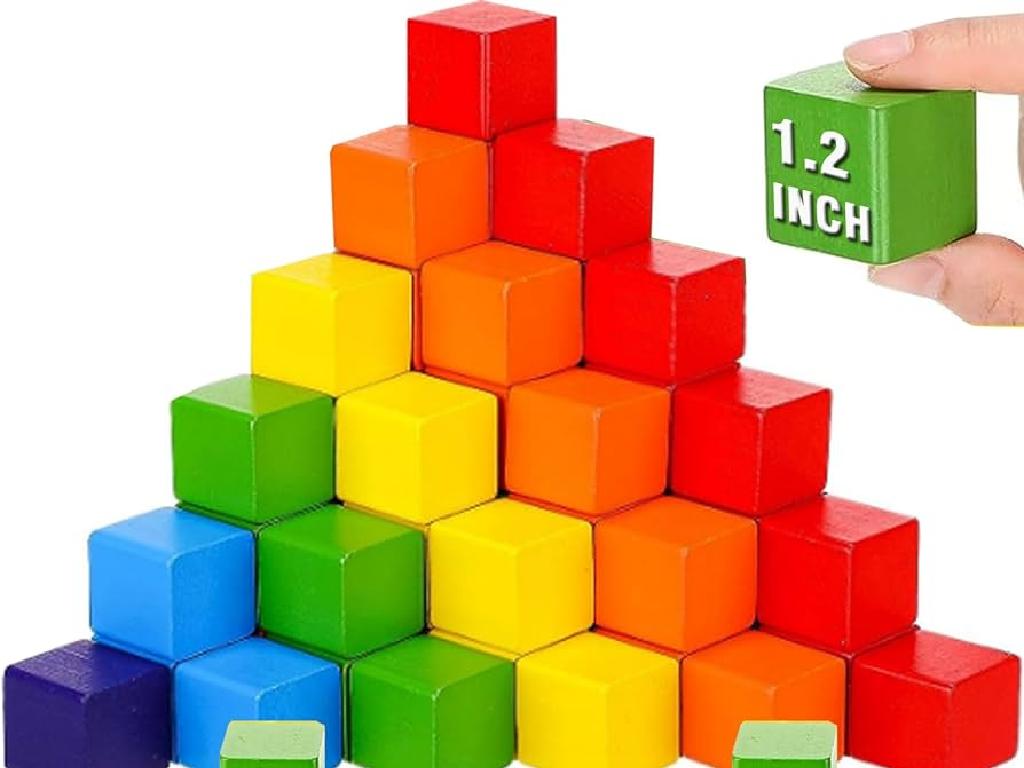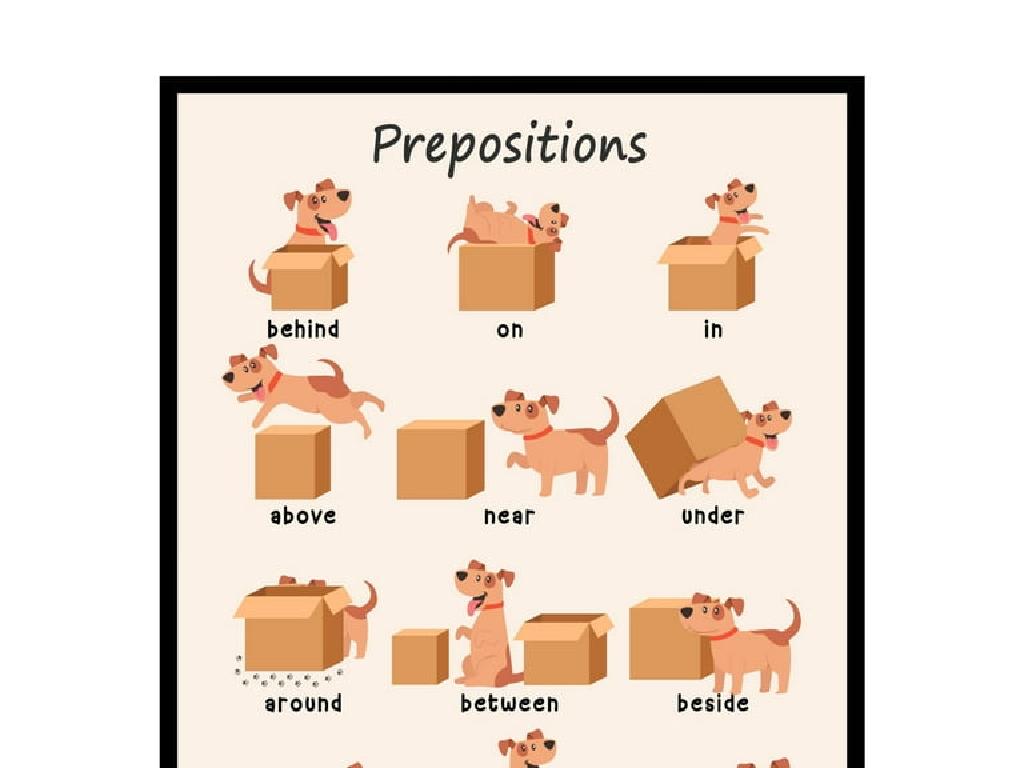Evaluate Variable Expressions
Subject: Math
Grade: Fifth grade
Topic: Variable Expressions
Please LOG IN to download the presentation. Access is available to registered users only.
View More Content
Welcome to Variable Expressions!
– Learn Algebra’s language
– Define variable expressions
– A combination of numbers, variables, and operations
– Understand their importance
– They help solve problems and represent real-world situations
– Explore their use in math
– Used in formulas, functions, and equations
|
This slide introduces students to the concept of variable expressions, a fundamental aspect of algebra. Begin by explaining that algebra is like learning a new language where numbers and letters are used to describe relationships and solve problems. Variable expressions are combinations of numbers, variables (like x or y), and operations (such as addition or multiplication) that represent a value. Emphasize the importance of variable expressions in math as they are used to solve a wide range of problems, from simple calculations to complex real-world situations. They form the basis for understanding formulas, functions, and equations that students will encounter in higher-level math. Encourage students to think of variable expressions as tools that can make solving problems easier and more efficient.
Understanding Variables in Math
– A variable represents an unknown number
– Variables are often letters like x, y, z
– Variable values can change
– Variables in math expressions
– For example, in 2x + 3, if x=5, then the expression equals 13
|
This slide introduces the concept of variables, which are fundamental in understanding algebra and mathematics as a whole. A variable acts as a placeholder for numbers we don’t know yet and can be represented by letters such as x, y, or z. It’s important to convey that the value of a variable can change depending on the situation. For instance, in different problems, x might equal 5, 10, or any other number. Use examples to show how variables fit into mathematical expressions and how changing the value of the variable changes the outcome of the expression. Encourage students to think of a variable as a box that can hold different numbers.
Understanding Variable Expressions
– Define a mathematical expression
– A mix of numbers, variables, and operations without an equal sign.
– Expressions vs. Equations
– Equations have equal signs, expressions do not.
– Examples of expressions
– 3 + x, 9 – y, 4z are all expressions.
|
This slide introduces the concept of variable expressions to fifth-grade students. Begin by explaining that an expression is a mathematical phrase that can include numbers, variables (like x or y), and operations (such as addition or multiplication), but it does not resolve to a single value, which is why it doesn’t have an equal sign. Contrast expressions with equations, emphasizing the presence of an equal sign in equations. Provide simple examples of expressions and encourage students to identify the numbers, variables, and operations in each. This foundational understanding is crucial for evaluating variable expressions, which they will learn to do in subsequent lessons.
Evaluating Expressions with One Variable
– Replace variable with a number
– If x is 5, put 5 in place of x
– Perform the operations
– Follow order of operations: multiply, then add
– Example: Evaluate 3x + 2 for x = 5
– Replace x with 5: 3(5) + 2 equals 15 + 2, which is 17
|
When evaluating expressions with one variable, the first step is to substitute the variable with the given number. Instruct students to carefully perform the operations according to the order of operations, which in this case is to multiply before adding. Use the example provided to demonstrate the process. For instance, if x equals 5, then 3x + 2 becomes 3 times 5 plus 2. After performing the multiplication (3 times 5 equals 15), then add 2 to get 17. This slide will help students understand the concept of variable substitution and how to evaluate expressions step by step.
Let’s Practice Together: Evaluating Expressions
– Evaluate 4y – 3 for y = 8
– Substitute y with 8 and calculate
– Evaluate 7 + 2x for x = 3
– Substitute x with 3 and calculate
– Share your answers
– Understand variable expressions
– Learn how to solve expressions with variables
|
This slide is designed for a class activity where students will practice evaluating variable expressions. Start by explaining the concept of substituting variables with given numbers. Then, guide the students through the process of evaluating the first expression, 4y – 3, by replacing y with 8 and solving the equation. Repeat the process for the second expression, 7 + 2x, with x as 3. Encourage students to calculate the answers on their own and then share with the class to foster a collaborative learning environment. This activity will help solidify their understanding of working with variables and expressions. Provide additional examples if time allows and ensure that each student is able to follow along and reach the correct solutions.
Evaluating Expressions with Two Variables
– Expressions can have multiple variables
– Each variable needs a specific value
– Example: Evaluate 3a + 4b for a=2, b=3
– Substitute a with 2 and b with 3: 3(2) + 4(3) = 6 + 12 = 18
– Practice with different values
– Try substituting other numbers for a and b
|
This slide introduces students to the concept of evaluating mathematical expressions that contain two different variables. Emphasize that in order to solve these expressions, they must know the values of each variable. Use the example provided to show how to substitute the values into the expression and then solve it. Encourage students to practice with different values to become comfortable with the process. This will help them understand how changing the value of a variable affects the outcome of the expression.
Group Activity: Variable Expression Bingo
– Receive your unique Bingo card
– Listen for variable values called out
– Calculate the expressions
– Use the values given to find the results
– Aim for five correct in a row to win!
|
This interactive group activity is designed to help students practice evaluating variable expressions in a fun and engaging way. Each student will receive a Bingo card filled with different variable expressions. As the teacher, you will call out specific values for the variables. Students must then use these values to evaluate the expressions on their Bingo cards. The goal is to be the first to calculate five correct expressions in a row, either horizontally, vertically, or diagonally, and call out ‘Bingo!’. For the teacher: Prepare Bingo cards in advance, ensuring each card has a unique set of variable expressions. Consider using a mix of addition, subtraction, multiplication, and division expressions. Have a list of variable values to call out during the game. Be ready to check the students’ calculations when they call ‘Bingo!’ to confirm their win. This activity not only reinforces the concept of variable expressions but also encourages quick thinking and mental math skills.
Homework: Mastering Variable Expressions
– Complete the worksheet provided
– Create your own variable expressions
– Use numbers, addition, subtraction, etc.
– Practice evaluating expressions
– Try different values for the variables
– Next lesson: Solving equations
|
For homework, students are expected to complete the worksheet on evaluating variable expressions to reinforce today’s lesson. Encourage them to practice by creating their own expressions using different operations and variables. Remind them that practicing these skills will help them become more comfortable with math concepts. In the next class, we will build on this foundation by learning how to solve equations that include variables. Prepare several examples of equations for the next lesson and consider peer-review sessions where students can exchange their created expressions for additional practice.





